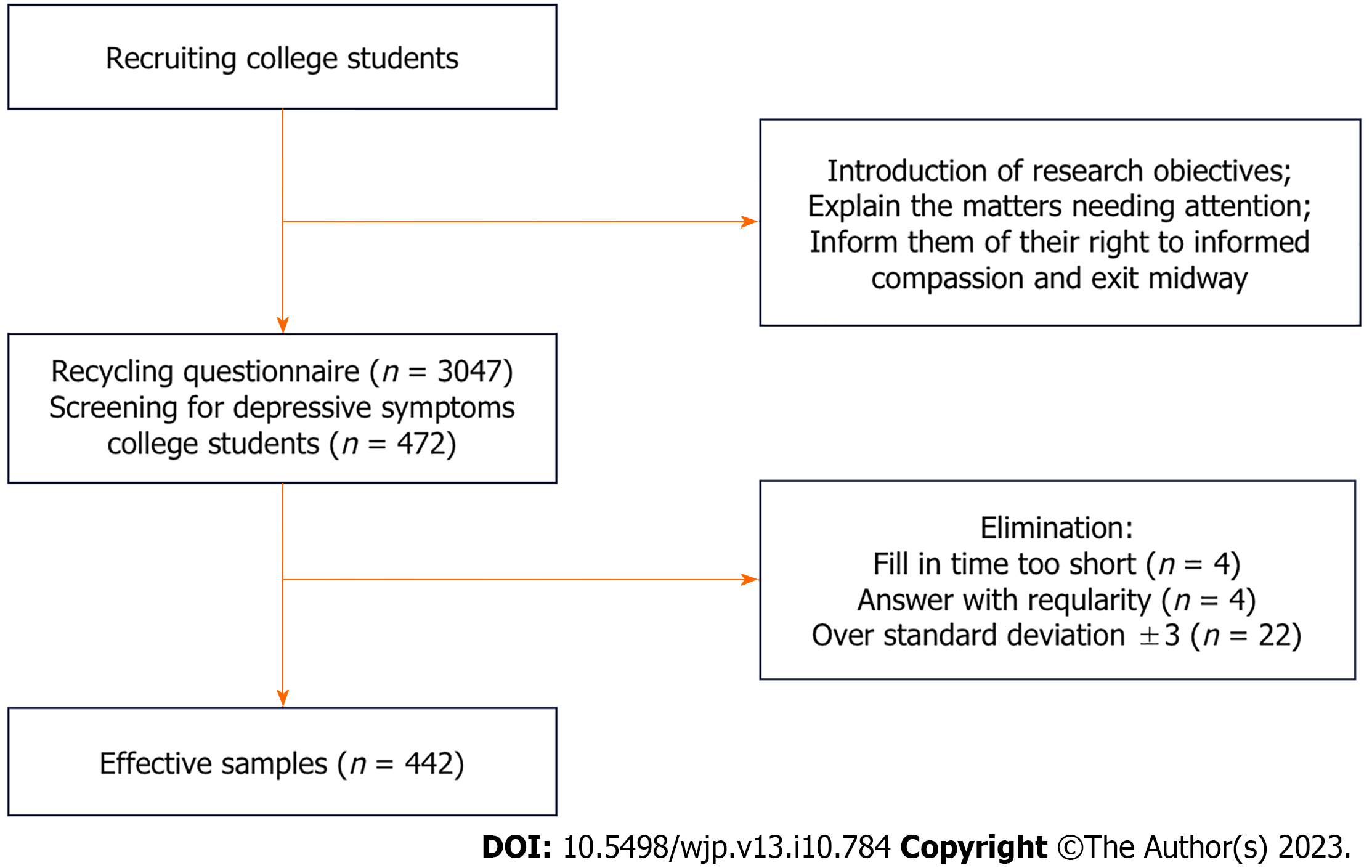Copyright
©The Author(s) 2023.
World J Psychiatry. Oct 19, 2023; 13(10): 784-792
Published online Oct 19, 2023. doi: 10.5498/wjp.v13.i10.784
Published online Oct 19, 2023. doi: 10.5498/wjp.v13.i10.784
Figure 1 Flow chart of the participants recruitment.
Figure 2 Correlations among the variables.
A: Depressive symptoms were significantly negatively correlated with physical activity; B: Depressive symptoms were significantly negatively correlated with reward responsiveness; C: Depressive symptoms were significantly negatively correlated with drive; D: Depressive symptoms were negatively, but not significantly, associated with fun-seeking; E: Physical activity was significantly positively correlated with reward responsiveness; F: Physical activity was significantly positively correlated with drive; G: Physical activity were positively, but not significantly, associated with fun-seeking.
Figure 3 Schematic diagram of the structural relationship model between physical activity, behavioral activation system, and depressive symptom indicators in college students with depressive symptoms.
There are direct pathways and reward responsiveness-mediated indirect pathways between physical activity and depressive symptoms.
- Citation: Zhu JH, Li SF, Wang P, Xin X, Zhao Q, Chen SC, Wang X. Correlation and pathways of behavioral activation systems mediating physical activity level and depressive symptoms among college students. World J Psychiatry 2023; 13(10): 784-792
- URL: https://www.wjgnet.com/2220-3206/full/v13/i10/784.htm
- DOI: https://dx.doi.org/10.5498/wjp.v13.i10.784















